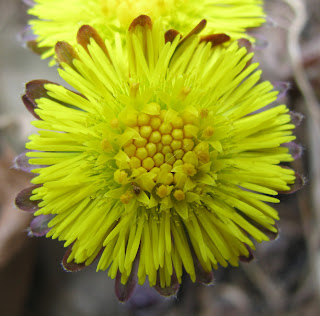Most of us know that all green vegetation absorbs sunlight and carbon dioxide in its photosynthetic process, and emits oxygen as it manufactures various sugars and carbohydrates. All animal life on Earth gets its energy this way. Without photosynthesis, without plants, there would be no animals.
The carbon dioxide that trees inhale gets turned into carbon—creating the structure of a tree. A mature tree can store up to 22 tons of CO2 in its trunk. That's why there is so much attention put to planting trees: to counter all the CO2 that we humans are discharging. Unfortunately, modern forest management sequesters far less CO2 than a natural forest, because soil disruption has prevented the necessary role of tiny soil critters. Additionally, only recently was it demonstrated that old trees grow fastest and thus absorb the most CO2.
Due to trees’ exchange of CO2 for oxygen, forest air is fresh; but not just because trees exhale oxygen. Leaves filter out small particles like soot, pollen, dust, acids, and toxic hydrocarbohydrates and nitrogen compounds. In addition to oxygen, trees emit phytonicides, which possess antibiotic properties. This makes me feel good about living in an area surrounded by hundreds of acres of forest. These benefits do not occur in human-planted forests, however, because many of those trees are not planted in the appropriate locations that Nature selects, so they are not as robust as in a natural forest stand.
The benefits of people living in a forested area have been measured. Human blood pressure is lower in a stand of trees than in open grassland. Older people's lung capacity and elasticity of their arteries improve, when they enter a forest. Yet forest air is not always rich in oxygen. During the day—when photosynthesis is active—a stand of trees will release up to 3 tons of oxygen per square mile; enough for 10,000 people. But at night the oxygen level drops significantly, as photosynthesis pauses.
Quaking aspen trees are unique, in that they can photosynthesize on both sides of their leaves, rather than just the top surface, as is the case for other deciduous trees. Think about that, the next time you observe an aspen's leaves fluttering and flapping in the wind—exposing top and bottom to the sun.
Because of this double-sided photosynthesis, aspens are an excellent pioneer species—they move into new areas and grow quickly. The downside is that herbivores enjoy the taste of sugary aspen leaves. (Remember the comeback of aspens in Yellowstone National Park, when wolves were reintroduced and reduced the elk population.) Aspen trees respond to overgrazing by expanding their root system, so a single tree may come to extend over a wide area. In Utah's Fishlake National Forest, a single aspen tree spans across 100 acres (40 hectares). It has grown some 40,000 individual trunks over a time span of thousands of years!
This completes a five-part series of fascinating facts about trees and their beneficial effects on us... from the book The Hidden Life of Trees: What They Feel, How they Communicate (2015), by Peter Wohlleben, who worked for many years as a forester in Germany.



